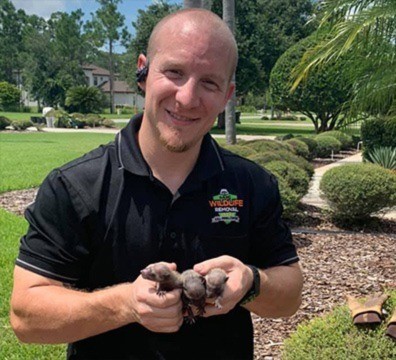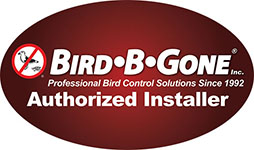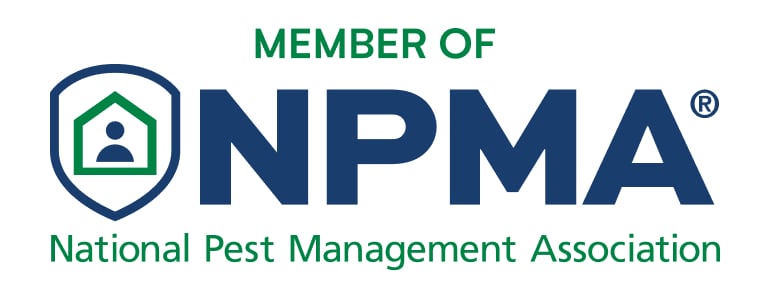Grant Valkaria homeowners face rising risks when raccoons move into attics, where droppings, urine, and nesting materials contaminate insulation and spread pathogens like Baylisascaris roundworm, a parasite found in many raccoon latrines that can infect humans if touched or inhaled.
In this guide you will learn about detecting raccoon infestations early, the step-by-step removal process, cost factors, health protection, and long-term prevention so your home stays safe and clean.

Grant Valkaria Raccoon Removal
Removing raccoons from attics is a task that should be done by qualified professionals. Raccoon removal can be more difficult than you think. These critters will scratch, bite and urinate which can result in serious injuries or disease if they’re not handled properly.
Raccoons are known to carry rabies, canine distemper, and raccoon roundworm. Not only that but they may also carry parasites like fleas, ticks, and lice which can cause severe skin irritations.
Signs of a Raccoon Problem in Your Home
Raccoons leave clear evidence when they invade homes, and identifying these signs early helps prevent costly structural and health problems. Understanding what to look for ensures homeowners in Grant Valkaria can act quickly before damage spreads.
Noises in the Attic and Walls
Raccoons are nocturnal and most active after sunset, so scratching, thumping, or chittering sounds in the attic often indicate their presence. Unlike smaller rodents, raccoons produce heavier, more deliberate movements that can resemble footsteps.
Mothers with young kits may create a variety of high-pitched noises as they communicate with their offspring. These sounds are typically concentrated in ceilings, chimneys, or wall voids where raccoons build nests. Consistent nighttime disturbances are one of the strongest indicators of an infestation.
Droppings and Urine Odors
Raccoon feces are larger than those of rats or squirrels, often cylindrical and sometimes containing seeds or berries. Their droppings frequently accumulate in “latrine sites” where raccoons return repeatedly, increasing contamination risks. Urine and feces produce a sharp, musky odor that can seep into insulation, drywall, and living spaces.
According to the CDC, raccoon droppings may contain Baylisascaris roundworm, a parasite harmful to humans and pets. Strong odors combined with visible waste should prompt immediate professional cleaning and removal.
Exterior Damage to the Home
Raccoons are strong enough to pry open vents, tear shingles, and enlarge soffit gaps to gain access indoors. Entry damage often appears around rooflines, chimneys, or attic vents where materials are weakened.
Their sharp claws can also leave scratch marks on siding or wooden beams near openings. This kind of destruction compromises the weatherproofing of a home and may expose wiring or insulation. Early inspection of exterior damage helps stop raccoons from establishing permanent nests inside.
Disturbed Trash and Pet Food
As opportunistic feeders, raccoons target unsecured garbage cans and outdoor pet dishes in search of easy meals. Knocked-over bins, scattered food scraps, or missing pet food are frequent signs they are active nearby.
They can open loosely fitted lids and may even drag food indoors to their den sites. Pet owners in Grant Valkaria are especially vulnerable if food is left outdoors overnight. Consistently disturbed trash or missing pet food is a warning that raccoons are likely visiting your property regularly.
Strange Pet Behavior
Household pets often detect raccoons before people notice physical evidence. Dogs may bark persistently at walls, ceilings, or attics, while cats become unusually agitated or avoid certain areas. This heightened alertness occurs because pets sense odors and sounds produced by raccoons nesting indoors.
Prolonged stress in pets can lead to behavioral issues or accidents inside the house. Paying attention to sudden changes in pet behavior can help identify a raccoon problem early and guide homeowners toward professional inspection.
Tracks and Paw Prints
Raccoon tracks are one of the most reliable indicators of their presence, easily identified by their handlike shape with five long toes. These prints are often visible in mud, soft soil, or near garden beds after nighttime activity.
Their front paws resemble tiny human hands, while the back paws are longer with a heel pad that leaves a distinct mark. Tracks are usually found around garbage bins, water sources, or entry points to the home. Spotting these patterns consistently suggests raccoons are active on your property.
Grease and Rub Marks
As raccoons repeatedly squeeze through entry holes, the natural oils in their fur leave dark, greasy smudges behind. These marks are commonly found on attic vents, siding edges, and roof openings. Over time, the buildup becomes more noticeable and can highlight frequently used pathways.
Unlike dirt or weather stains, rub marks appear in concentrated streaks that match raccoon-sized openings. Recognizing these patterns can help pinpoint active entry points before more serious damage occurs.
Nesting Materials in the Attic
Raccoons gather leaves, twigs, and insulation to create a warm nest inside attics or crawl spaces. Shredded insulation and compacted piles of debris are typical signs of denning activity. They often select corners or secluded areas for building nests, making them harder to notice until significant mess accumulates. Nesting sites may also contain droppings or food scraps, increasing health hazards. Identifying and removing these materials quickly is essential to prevent long-term contamination.
Bird Feeder and Garden Damage
Raccoons are notorious for raiding bird feeders and backyard gardens in search of food. Empty feeders, bent poles, or scattered seeds on the ground often indicate their nightly visits. In gardens, they may dig up plants, eat vegetables, or trample soil as they forage.
Their persistence can lead to repeated crop losses or destroyed landscaping if left unchecked. Monitoring outdoor food sources helps confirm their activity and supports prevention strategies.
Daytime Sightings
Although raccoons are nocturnal, occasional daytime sightings may suggest nearby nesting or high population density. Females caring for young sometimes search for food during daylight hours. Sick raccoons, particularly those with distemper or rabies, may also appear unusually active in the daytime.
Wildlife experts, including AAAC Wildlife Removal, note that daytime behavior should always be taken seriously as it can pose a direct safety risk to people and pets. Observing raccoons during daylight hours often signals an urgent need for inspection..
Our Raccoon Removal Process Explained
Professional raccoon removal is a structured process designed to eliminate the animals safely, prevent re-entry, and restore your home to a healthy condition. Each step is carried out with humane methods that comply with Florida regulations and protect both residents and wildlife. Here’s how the process works in detail:
1. Setting Traps
Traps are strategically placed in areas where raccoons are most active, such as attic entry points, rooflines, or near latrine sites. Humane cage traps are commonly used, baited with foods raccoons naturally find appealing like marshmallows or canned pet food.
The goal is to capture the animal safely without causing injury or stress. Traps are checked regularly to ensure quick removal once a raccoon is caught.
2. Removal and Relocation
Once captured, raccoons are handled carefully to avoid direct human contact and minimize the spread of disease. Licensed professionals follow relocation practices that comply with local wildlife laws, moving the animals to safe environments away from homes.
This ensures raccoons cannot return to the same property while maintaining humane standards. By removing them promptly, homeowners are protected from further damage and contamination risks.
3. Entry Point Inspection & Sealing
After removal, the property is thoroughly inspected for openings raccoons used to enter. Common entry points include soffits, vents, roof gaps, and loose siding.
Each hole is sealed using durable materials like galvanized steel mesh or reinforced flashing to withstand future tampering. By eliminating these access points, the likelihood of repeat infestations is greatly reduced.
4. Attic Cleanup & Sanitization
Raccoons often leave behind droppings, urine, nesting debris, and parasites that create serious health hazards. Specialized cleaning products and enzyme-based disinfectants are applied to neutralize odors and kill bacteria, viruses, and mold spores.
This process also targets parasites such as fleas and ticks that may remain in the attic after the animals are gone. Proper sanitization restores the attic to a safe condition for families and pets.
5. Odor & Insulation Restoration
Persistent odors from urine and waste can linger even after cleanup, so deodorizing treatments are used to remove them completely. Damaged or contaminated insulation is removed and replaced with new material to restore the attic’s energy efficiency.
This step not only repairs structural issues but also helps prevent future wildlife from being attracted by residual smells. A fully restored attic ensures the home is safe, clean, and comfortable again.
Protect Your Home with Expert Raccoon Removal in Grant Valkaria
Raccoons can cause extensive attic damage, spread harmful diseases, and create long-term risks if left unchecked. By recognizing the early signs, addressing infestations through a structured removal process, and restoring your attic properly, you safeguard both your property and your family’s health. Professional help ensures humane treatment of wildlife while delivering long-lasting protection for your home.
AAAC Wildlife Removal provides local expertise, humane trapping, thorough cleanup, and damage repair tailored to the needs of Grant Valkaria homeowners. Our certified team is ready to act quickly, prevent repeat invasions, and restore your peace of mind. For fast, safe, and effective raccoon removal, call us today to schedule your service.
[page-generator-pro-related-links post_type=”aaaclocations” post_status=”publish” post_parent=”Grant Valkaria”]
Other Services in Grant Valkaria
[page-generator-pro-related-links group_id=”6276,6278″ post_type=”aaaclocations” post_parent=”Grant Valkaria” output_type=”list_links_bullet” columns=”2″]
[page-generator-pro-related-links group_id=”6277″ post_type=”page” post_status=”publish” post_parent=”grant-valkaria” output_type=”list_links” limit=”0″ columns=”3″ orderby=”name” order=”asc”]
Grant Valkaria
About Grant Valkaria
Grant-Valkaria is a town in Brevard County, Florida. The town’s population was 3,850 at the 2010 United States Census. Grant-Valkaria is located south of Melbourne, between Palm Bay and Sebastian. It is part of the Palm Bay–Melbourne–Titusville Metropolitan Statistical Area. Wikipedia
Neighborhoods
Grant – Pomello Ranch – Bear Creek – Melbourne Manor – Cypress Lake Estates – Lake Ridge – Model Indian River Gardens – Tadlocks – Florida Indian River – Hunters Run – Riverview Terrace Estates – Valkaria Heights – South Grant – Vacation Island Playground – Grant Island Estates – Valkaria – Grant-Valkaria –
Top Sights
[page-generator-pro-related-links output_type=”prev_next” columns=”3″ parent_title=”%title%” next_title=”%title%” prev_title=”%title%”]









